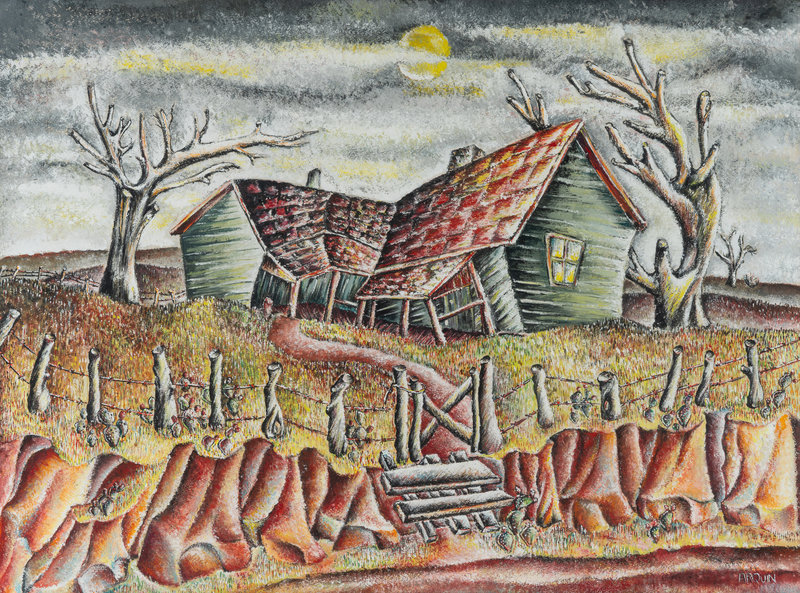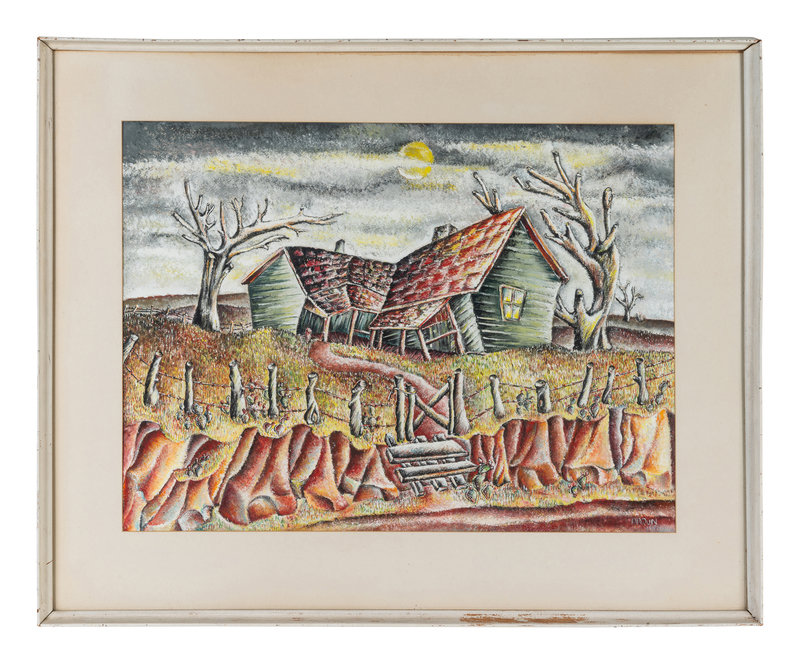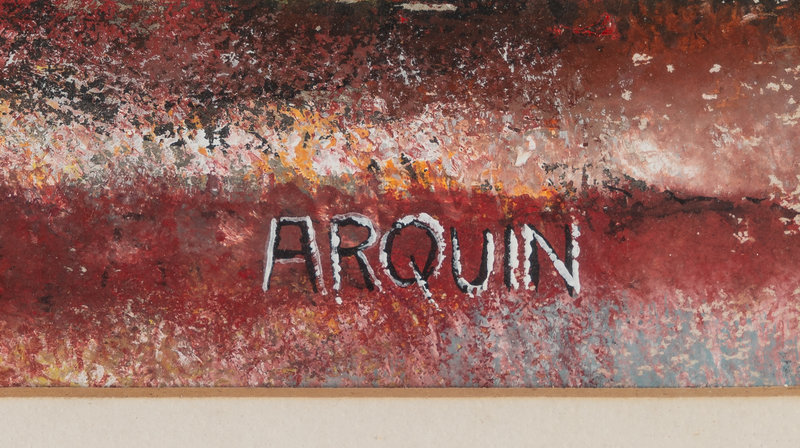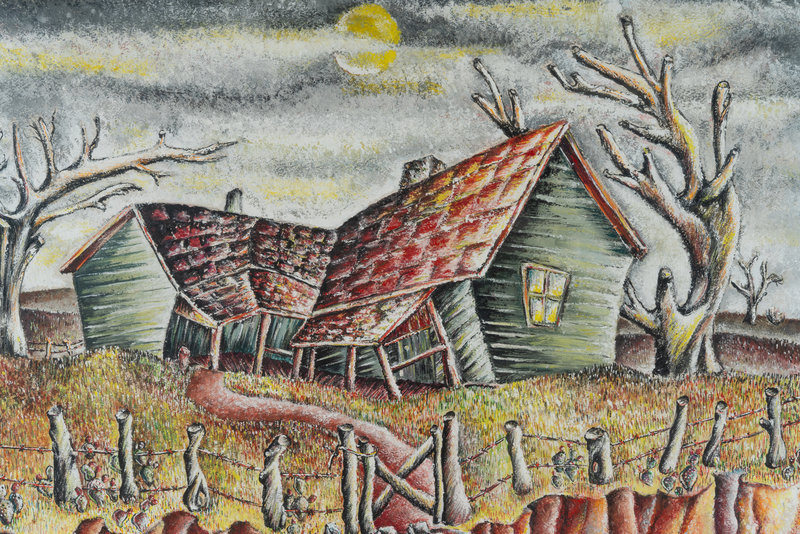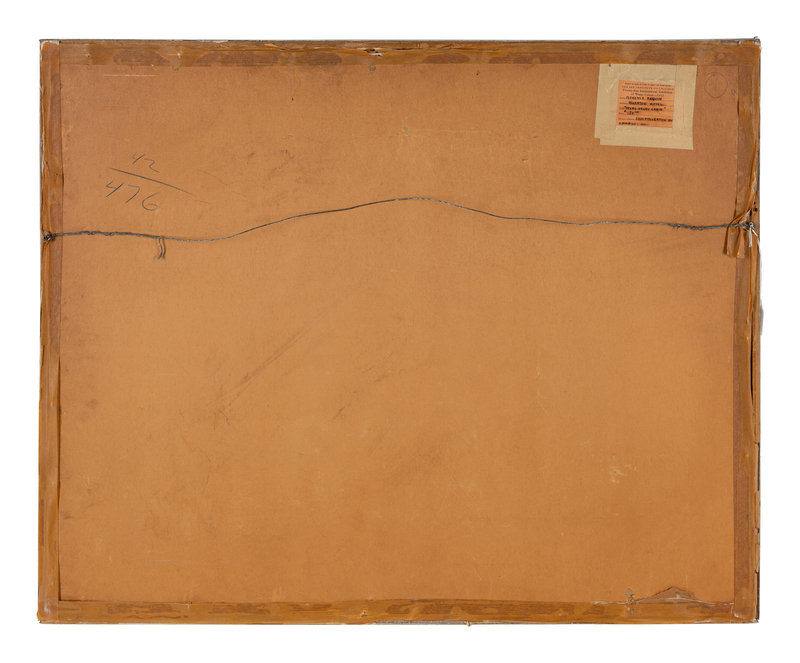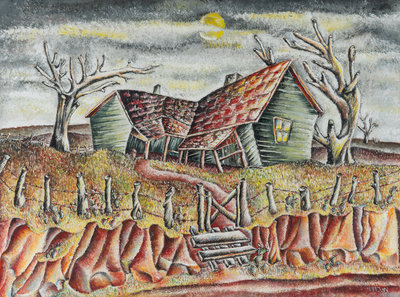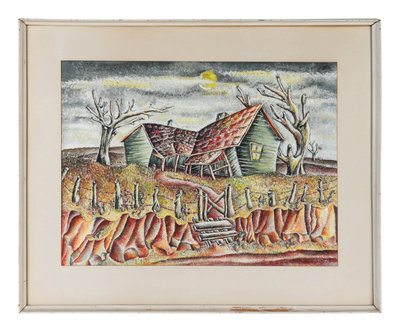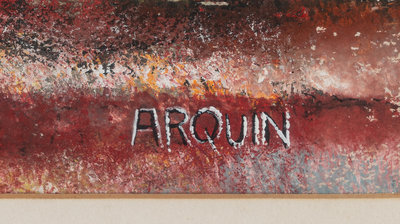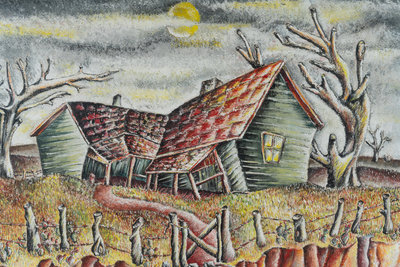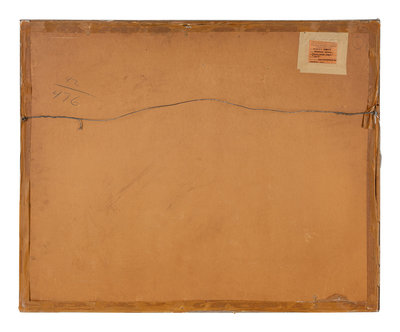Lot 52
Provenance:
The Artist
Samuel A. Williams, husband of the above
Thence by descent to the present owner
Exhibited:
Chicago, Illinois, Art Institute of Chicago, Twenty-first International Exhibition of Water-Colors, May 14 - August 23, 1942
Lot note:
Widely known for her expertise in Latin American studies, Florence Arquin (1900-1974) went by additional titles, including that of painter, documentary photographer, educator, writer, and critic. Originally from New York City, she initially studied medicine and around 1918 worked at the labs at University of Chicago. However, Arquin switched career paths after her brother, a doctor, died during the spinal meningitis epidemic of the mid-1920s in Chicago. She eventually graduated with a degree in art education from the School of the Art Institute of Chicago in 1933. Throughout the early 1930s, Arquin served as an arts educator in Chicago area schools, and from 1935-39, worked for the Federal Art Project in Illinois. In 1939, she joined the School of the Art Institute of Chicago to develop education programs for secondary school students. Arquin also participated in many of the local art exhibitions, including the Art Institute’s Chicago and Vicinity shows and the Chicago Society of Artists. Her involvement with the Chicago art scene led to friendships with other artist-educators in the area, including Kathleen Blackshear and Ethel Spears.
In the early 1940s, Arquin traveled to Mexico to pursue postgraduate studies at the National University of Mexico in Mexico City. It was here that she developed friendships with Diego Rivera, Frida Kahlo, Wolfgang Paalen, Alice Rahon, and Carlos Mérida, among others. In 1943, a solo exhibition of Arquin’s work was held at the Benjamin Franklin Library in Mexico City. The exhibition catalog’s introduction included praise by Rivera, who lauded Arquin’s “ardent work and exuberance of style,” stating, “Florence Arquin sees with every pore of her skin. Her nerves absorb the vibration of color, the inflections of the forms, the quality of the earth, of the air, and of the light, for the purpose of synthesizing all of these in her painting.” Arquin would go on to write about the artist’s formative years in Diego Rivera: The Shaping of an Artist, 1889-1921, published in 1971 by the University of Oklahoma Press.
From 1945 to 1951, Arquin was Director of the Kodachrome Slide Project, part of the Department of State. In this role, she traveled to Brazil, Bolivia, Peru, and Ecuador to photograph the life and culture of these countries. The slides and lectures acted as visual supports for schools and institutions to teach Latin American art and culture and promote the United States policy of Pan-Americanism. Under another State Department grant, duplicates of Arquin’s photographs were made available to purchase. After the State Department deaccessioned the slides, Arquin sold them in 1964 to Florida Atlantic University, along with new slides she had taken in the intervening years of Latin America, Morocco, Spain, Portugal, and other European countries.
Arquin’s vast collection of images include those of Rivera and Kahlo at home, which are now housed in the Smithsonian Museum’s Archive of American Art and the Frida Kahlo Museum in Mexico. Additional slides include documentation of Rivera’s work, including his portrait of Arquin herself. The friendship between Kahlo and Arquin is further demonstrated by Diego y yo, 1949, painted by Kahlo and with an inscription on the verso to Arquin and her husband Samuel Williams: “For Florence and Sam with Frida’s love. Mexico, June 1949.” On November 16, 2021, this self-portrait sold at Sotheby’s for $34.9 million, the highest price achieved at auction by Kahlo and the record price for a Latin American artist. Florence and Samuel married in Chicago in 1922, and he occasionally accompanied her on her travels. After Arquin’s death in 1985, Samuel married Carol Williams, who is pleased to share with the public many of the artworks in Hindman Auction’s sale, Figuratively Speaking.
